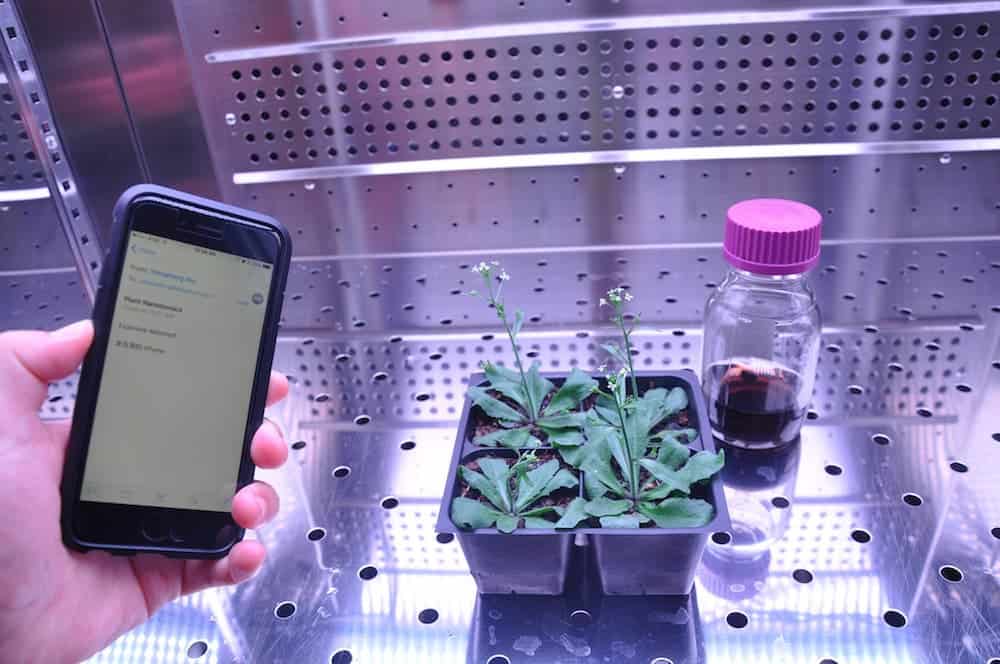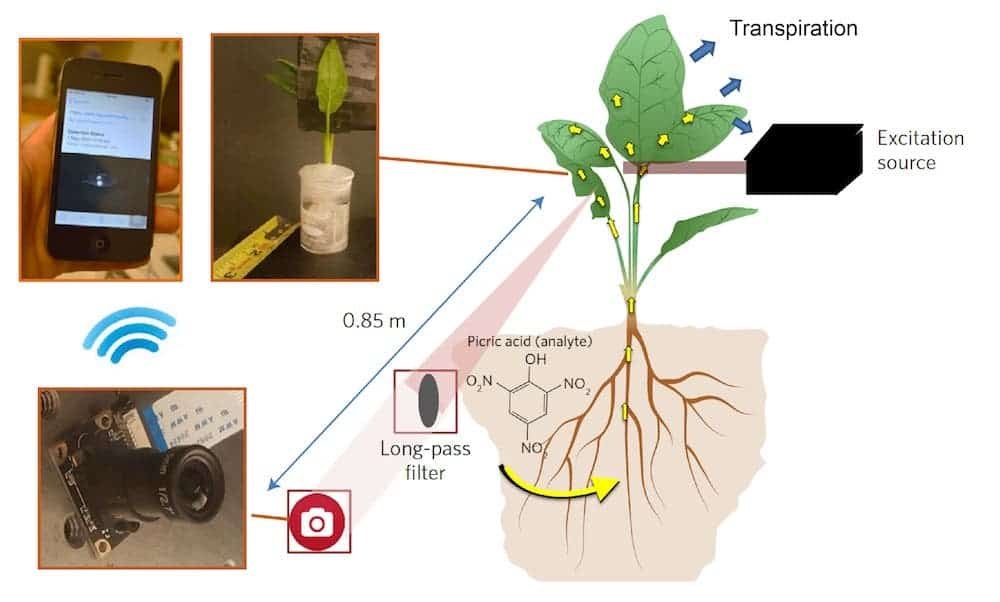
Popeye’s favorite superfood was turned into an explosive detector after researchers at MIT enhanced the plant’s natural sensing abilities with nanotechnology. When explosive molecules bind to the plant’s leaves, these emit a telltale infrared signal that can be read with cheap equipment — even a smartphone with the right camera. This is one of the first demonstrations of “plant nanobionics” — engineering electronics inside plants — something that we’ll hear about more often in the near future because of the immense potential this technology has for detecting virtually anything: explosives, CO2, droughts, even neurotransmitters like dopamine. The possibilities could be endless.
Borg plants
Previously, in 2014, the team led by Michael Strano, the Carbon P. Dubbs Professor of Chemical Engineering at MIT, worked with a common lab plant called Arabidopsis thaliana. Back then, they also showcased plant nanobionics technology by using nanoparticles to enhance photosynthesis, but this time they wanted to use spinach because it’s so common and ubiquitous. Seeing how it worked with spinach, it should work with right about any plant, the researchers reckon.
Strano and colleagues first developed carbon nanotubes — a tube-shaped material, made of carbon, having a diameter measuring on the nanometer scale — which can sense a wide range of molecules, including TNT, sarin nerve gas or hydrogen peroxide.
Using a technique known as vascular infusion, the researchers applied a solution of these nanoparticles to the underside of the spinach’s leaves. This allows the plant to detect nitroaromatics, which are often used in landmines and other explosives. When one of these chemicals binds to the tubes, it alters their fluorescence.
Another set of carbon nanotubes was embedded in the plant which emits a constant fluorescent signal. This serves as a reference to compare the explosive-detection fluorescent signal against a background and drastically speeds up detection. If there are any explosives in groundwater, for instance, the spinach bomb detector can draw them in under 10 minutes, as reported in Nature Materials.

To read the signal, a laser is shone onto the leaf prompting the leaves to emit near-infrared fluorescent light. Then, a small infrared camera connected to a cheap computer, like a $35 Raspberry Pi, can be used to monitor the signals. A smartphone whose infrared filter from the camera is removed can also be used with accuracy.
“This is a novel demonstration of how we have overcome the plant/human communication barrier,” says Strano.
Plants are already one of the best sensors in the world. If you ever thought plants are good listeners, you’re not far from the truth as they continuously monitor the air, soil, moisture, and water — otherwise, they couldn’t adapt to the slightest weather and climate fluctuations, perishing.
“Plants are very good analytical chemists,” Strano says. “They have an extensive root network in the soil, are constantly sampling groundwater, and have a way to self-power the transport of that water up into the leaves.”
Besides explosive detection, the MIT lab also engineered spinach plants that read dopamine, which can influence plant root growth. They’re also working on other sensors which can track chemicals plants use to convey information within their own tissues.
“Plants are very environmentally responsive,” Strano says. “They know that there is going to be a drought long before we do. They can detect small changes in the properties of soil and water potential. If we tap into those chemical signaling pathways, there is a wealth of information to access.”






